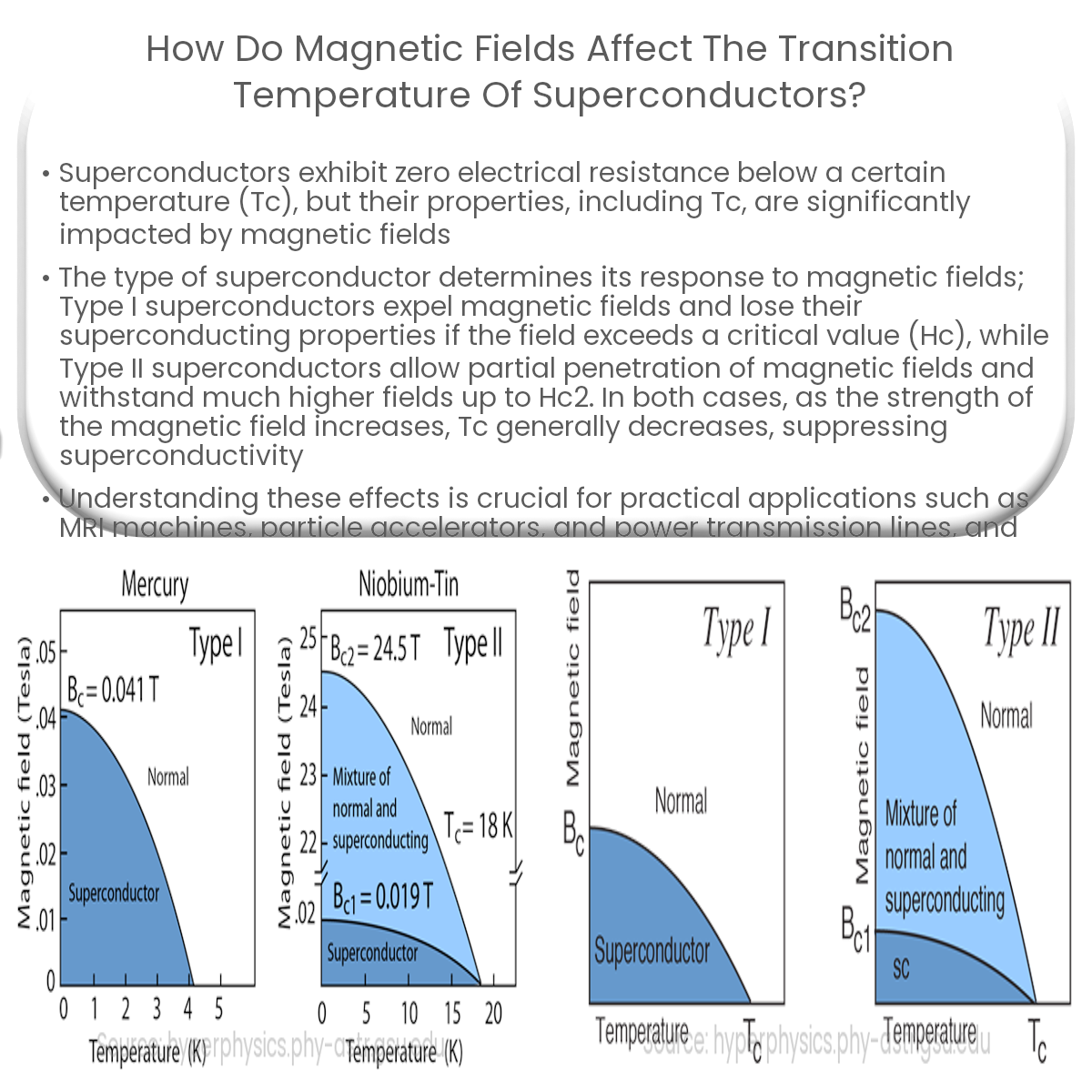Magnetic fields can suppress superconductivity, causing a decrease in the transition temperature of superconductors as the field strength increases.
Impact of Magnetic Fields on the Transition Temperature of Superconductors
Superconductors are materials that exhibit zero electrical resistance when cooled below a critical temperature (Tc), allowing them to conduct electricity without any energy loss. The presence of magnetic fields can significantly influence the superconducting properties of these materials, including their transition temperature.
Magnetic Field and Critical Temperature
The transition temperature of a superconductor depends on various factors, such as material composition, pressure, and external magnetic field. The effect of magnetic fields on Tc is described by the critical magnetic field (Hc) or the upper critical field (Hc2) for type II superconductors. In general, as the strength of the magnetic field increases, the transition temperature decreases, leading to a suppression of superconductivity.
Type I and Type II Superconductors
Superconductors can be classified into two types based on their response to magnetic fields. Type I superconductors completely expel magnetic fields (Meissner effect) when cooled below Tc and lose their superconducting properties if the magnetic field exceeds Hc. In contrast, type II superconductors allow partial penetration of magnetic fields via quantized vortices and can withstand much higher magnetic fields up to Hc2.
Effect of Magnetic Field on Tc
In type I superconductors, the transition temperature decreases as the applied magnetic field approaches Hc, following the relationship Tc(H) = Tc(0) * (1 – (H/Hc)2), where Tc(0) is the critical temperature in the absence of a magnetic field. When the magnetic field exceeds Hc, superconductivity is completely destroyed.
For type II superconductors, the suppression of Tc is more complex, and the upper critical field Hc2 plays a crucial role. The relationship between Tc and Hc2 can be described by various models, such as the Ginzburg-Landau or the BCS theory. Generally, Tc decreases gradually with increasing magnetic field until it reaches zero at Hc2.
Applications and Challenges
Understanding the impact of magnetic fields on the transition temperature of superconductors is crucial for their practical applications, such as MRI machines, particle accelerators, and power transmission lines. To fully exploit the benefits of superconductors, researchers aim to develop materials with higher Tc and improved tolerance to magnetic fields. This ongoing quest involves the discovery of new superconducting materials, understanding the underlying mechanisms, and optimizing material properties for various applications.


